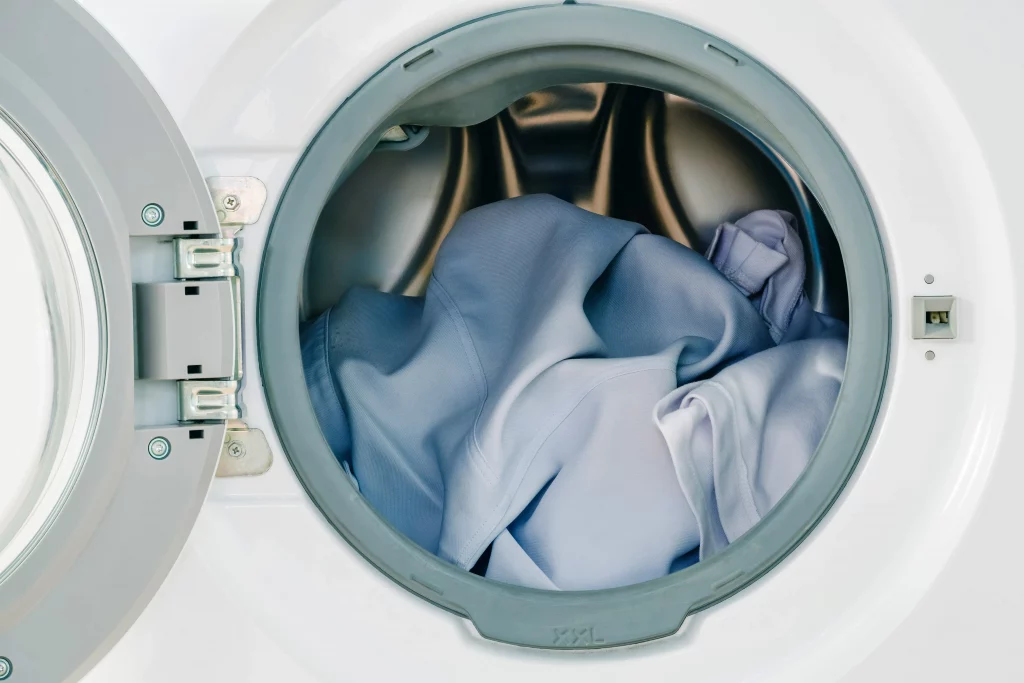 Get How-To's
Get How-To's
How to Unshrink Clothes – A Complete Guide to Unshrinking Clothing
Discover price transparency and savings in our Calculator!
Read tips, tricks, and how-to’s on our Fabric of Life blog.
How-To's

You can distinguish silk by its appearance and its soft, smooth texture. The soft natural fibers that make up silk are what make it comfortable to wear. However, its delicate nature means it is susceptible to excess moisture, heat, and direct sunlight. These factors can compromise the integrity of silk clothing fibers, leading to discoloration, shrinkage, or even permanent damage – meaning silk requires careful care techniques.
Handwashing is the best method for cleaning silk, since it is a lot gentler than machine washing. It also gives you more control over friction and water temperature, reducing the risk of damage.
When using a washing machine instead of handwashing, it’s important to know how to protect delicate fibers. One way to do this is by placing the silk item in a mesh bag to shield it from rough agitation. In addition, follow the steps below.
One rule: NEVER put silk in the dryer! Even a low heat setting can damage the proteins that make up these fibers. This irreversible damage can lead to shrinkage and create a weakened state. Instead of sticking it into the dryer, it is best to use no heat techniques to dry your silk fabrics.
To dry silk correctly, gently use a pressing cloth or dry towel to press out excess water. Once you have wrung out as much water as possible, lay the garment flat on a drying rack in a dry place, away from direct sunlight. This method prevents distortion that can occur if silk is hung to dry where sunlight could damage it.
It’s important to wait until your silk is completely dry before putting it away. This ensures there is no excess moisture left over, which can be a breeding ground for mildew growth. Mildew growth can cause irreversible damage and unpleasant odors. Be sure to hang instead of fold your silk items as they dry and wait until they are fully dry to store.
Avoiding direct sunlight is important when wearing silk as it can cause the fabric color to fade over time. You should also avoid the use of body lotions or perfumes which can leave stains on these delicate fabrics. If you wish to pair these fragrance products with your outfit, apply them and allow them to fully dry before putting on your silk garments.
Proper storage is essential for maintaining the quality of silk garments. Store silk items in a cool, dry place, ideally in breathable garment bags or cotton pillowcases to protect them from dust and light. Remember that you can hang silk clothing on a padded hanger to maintain its shape and prevent wrinkles. For silk scarves and pillowcases, consider folding them neatly and storing them in a drawer or a breathable bag.
If a silk garment becomes stained, act quickly to address the issue. You can use the following 4 easy steps to help remove a stain from your silk fabrics:
Sometimes DIY solutions and at-home methods aren’t enough to get out a stain or fully clean your delicate fabrics. In some situations, trusting a dry cleaner is the smartest way to safely cleanse your silk fabrics.
Some silk garments or delicate items you may want to send over to a dry cleaner are pieces like silk jackets or items with intricate embellishments as they can be fragile. You might also consider using a professional cleaning service if your silk products are especially valuable for expensive or high maintenance. Professional cleaning can provide peace of mind, especially if you’re unsure how to handle a particular piece.
CD One Price Cleaners offers fast turnaround times on all dry cleanings and gentle, yet effective stain removal. Our team of professionals makes it convenient for you to keep everything from silk scarves to silk pillowcases looking fresh and brand new.
For professional care, consider CD One Price Cleaners. Visit today for convenient and quality service, ensuring your silk maintains its quality and beauty. Your silk deserves the best—trust CD One Price Cleaners for expert care!
We think you may like
 Get How-To's
Get How-To's
How to Unshrink Clothes – A Complete Guide to Unshrinking Clothing
 Get Garment Guides
Get Garment Guides
Gas vs Electric Dryer
 Get How-To's
Get How-To's
How to Iron